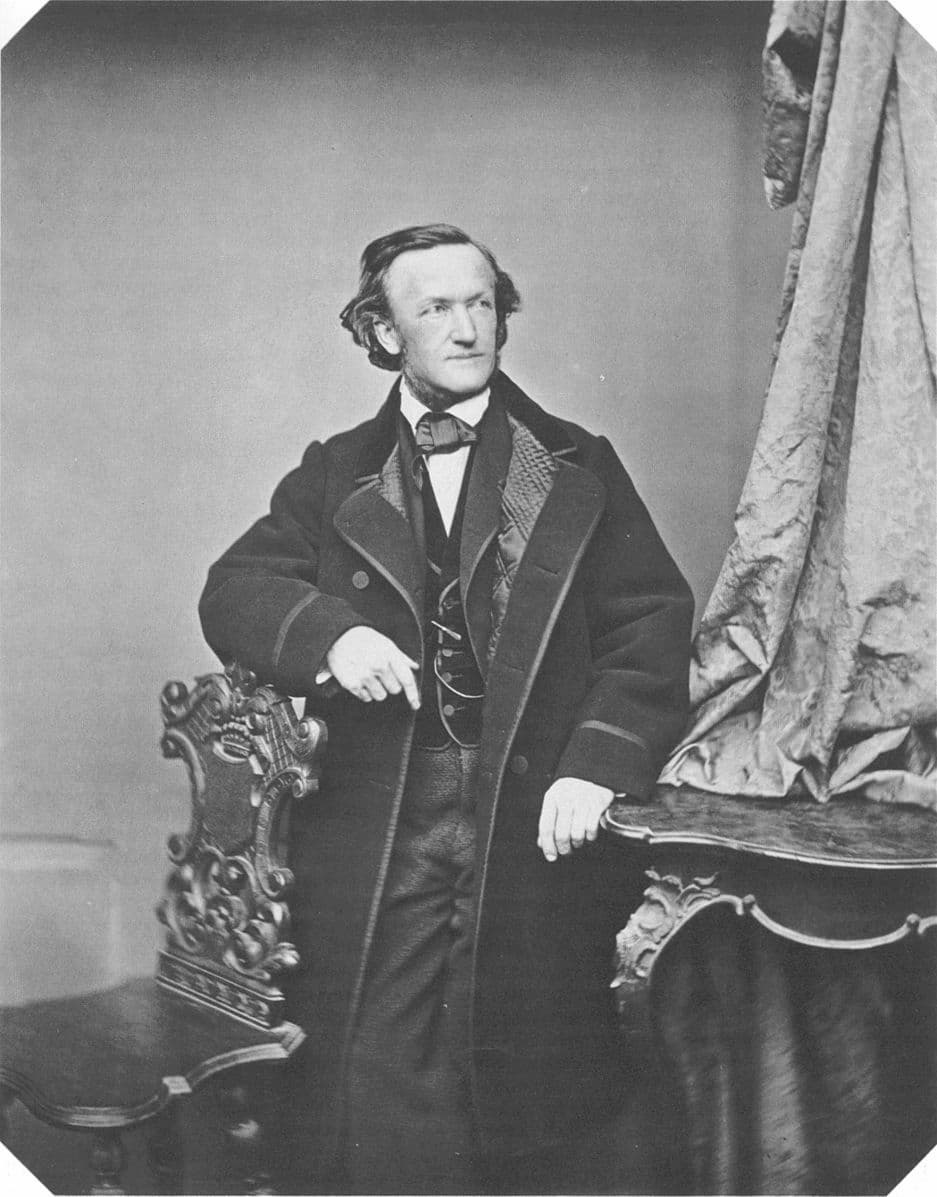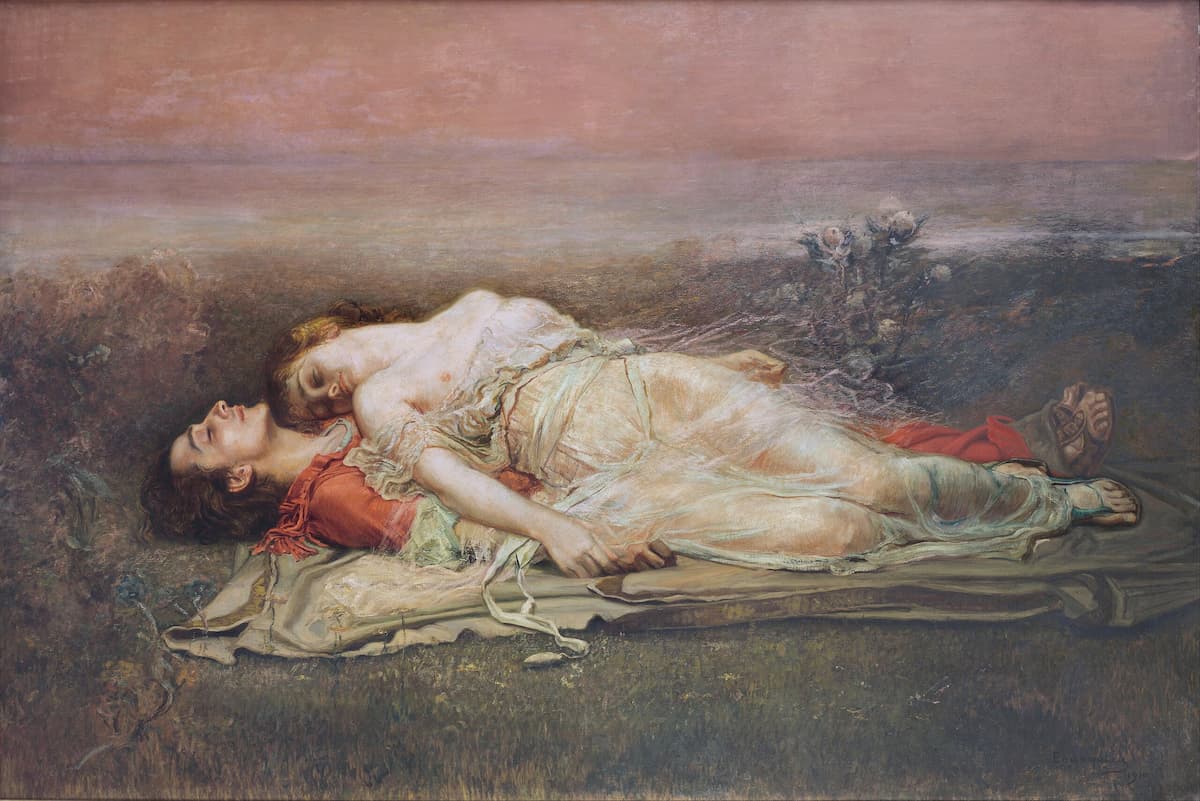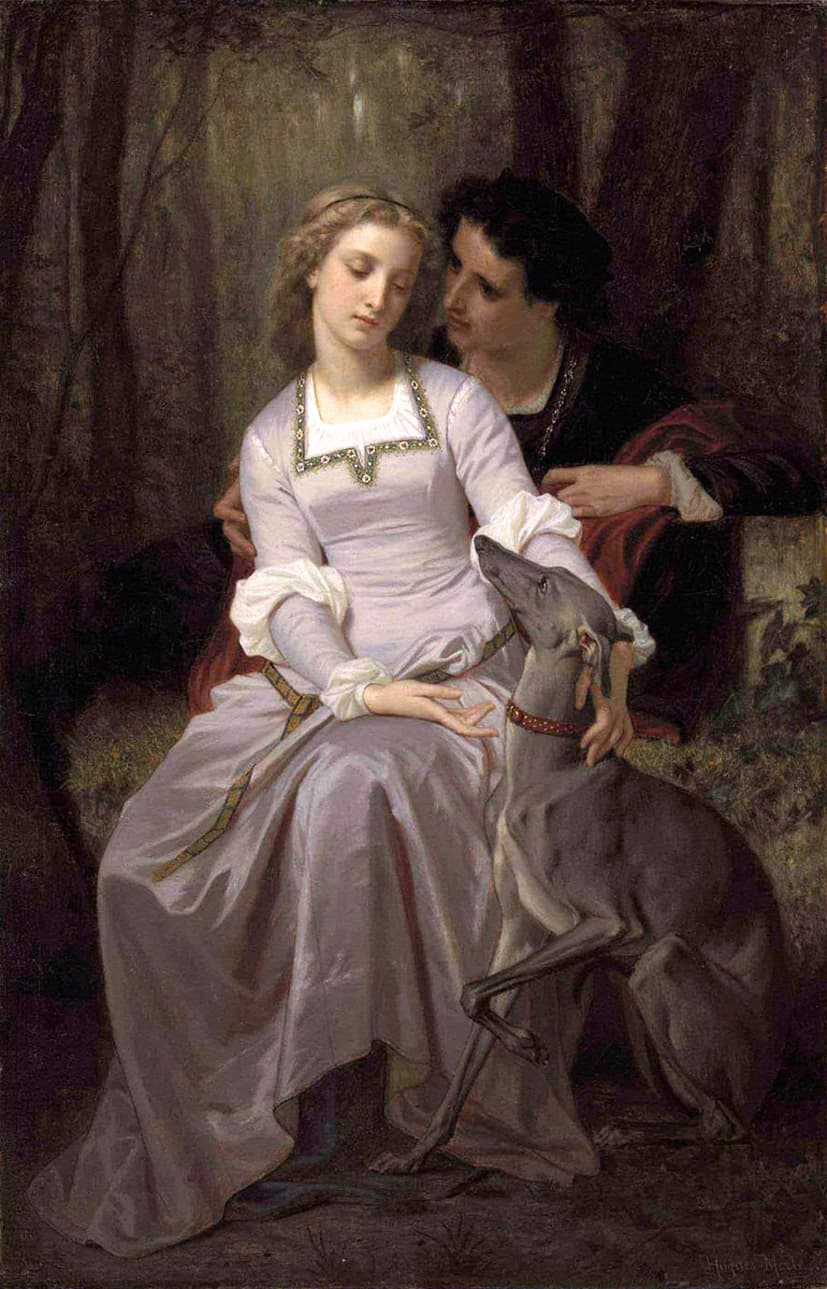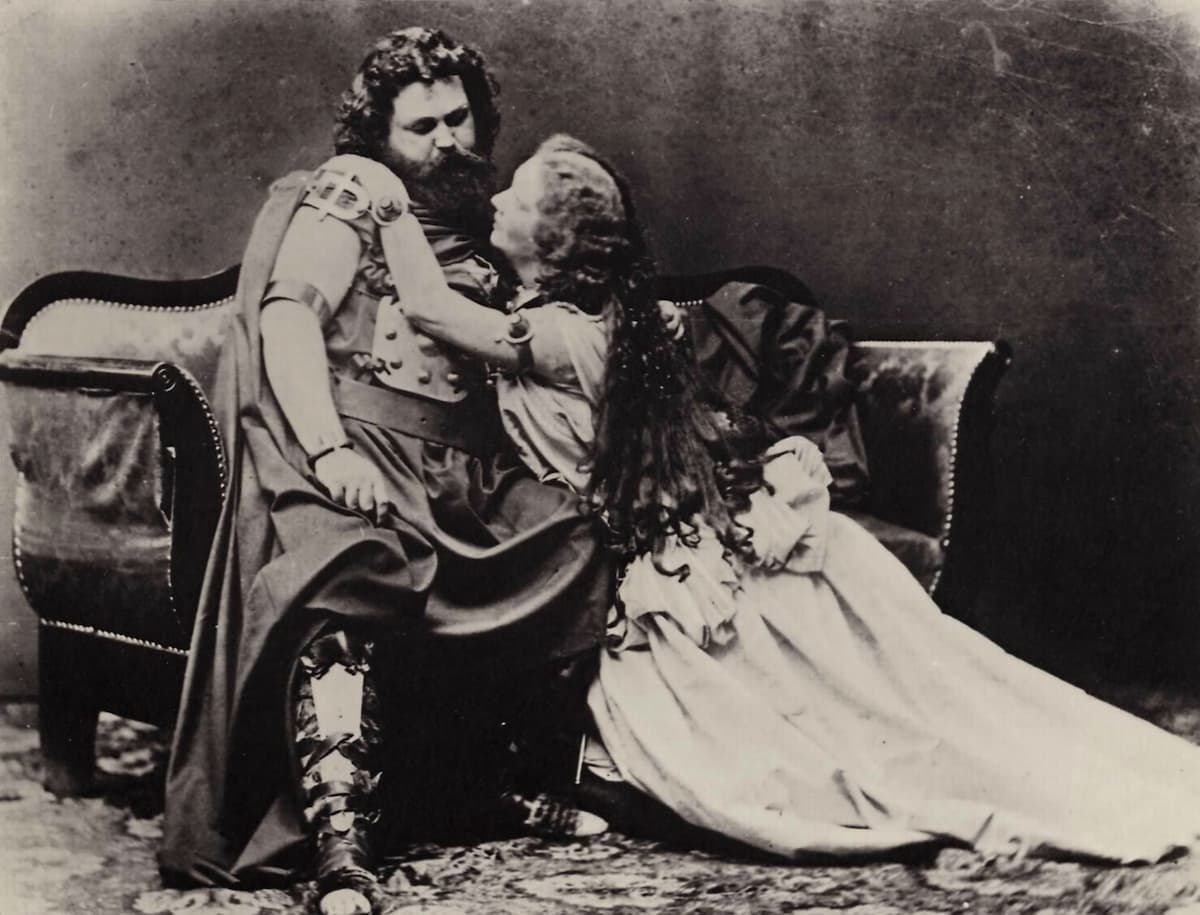One of the milestones in the history of music, the three-act drama Tristan and Isolde with libretto and music by Richard Wagner premiered on 10 June 1865 at the Königliches Hof- und Nationaltheater in Munich with Hans von Bülow conducting. Wagner referred to the work not as an opera, but called it “Handlung,” literally a drama, a plot, or an action. It had far-reaching effects regarding the emancipation of dissonance, and in terms of emotional expressions, Wagner called it “a monument to this loveliest of all dreams.”
Richard Wagner: Tristan and Isolde, “Act I”
Isolde and Mathilde

Richard Wagner, 1860
Countless versions of the medieval chivalric romance “Tristan and Iseult,” also known as “Tristan and Isolde” have been told since the 12th century. Possibly based on a Celtic legend, the tale is a tragedy about the illicit love between the Cornish knight Tristan and the Irish princess Iseult. Tristan is tasked to escort Iseult from Ireland to marry his uncle, King Mark of Cornwall, but on the journey both drink a love potion, leading to a forbidden love affair.
The primary reason Wagner got interested in this story was his own forbidden love affair with Mathilde von Wesendonck. Wagner had been forced to leave Dresden under threat of incarceration for his participation in the unsuccessful May Revolution. He left his wife Minna in Dresden and fled to Zürich. In 1852, he met the wealthy silk trader Otto Wesendonck who bankrolled the composer for several years. Although Wagner was working on his Ring des Nibelungen, his interest quickly fell on Mathilde and on Tristan and Isolde.
Richard Wagner: Tristan and Isolde – Act II Scene 1: Hörst du sie noch? (Nina Stemme, soprano; Janina Baechle, mezzo-soprano; Vienna State Opera Orchestra; Franz Welser-Möst, cond.)
Richard Wagner: Tristan and Isolde – Act II Scene 2: So stürben wir, um ungetrennt (Nina Stemme, soprano; Peter Seiffert, tenor; Janina Baechle, mezzo-soprano; Vienna State Opera Orchestra; Franz Welser-Möst, cond.)
The Poem

Rogelio de Egusquiza: Tristan and Isolde (Death)
Wagner wrote to Franz Liszt in 1854, “Never in my life have enjoyed the true happiness of love I shall erect a memorial to this loveliest of all dreams in which, from the first to the last, love shall, for once, find utter repletion. I have devised in my mind a Tristan und Isolde, the simplest yet most full-blooded musical conception imaginable, and with the ‘black flag’ that waves at the end I shall cover myself over – to die.”
Wagner was now living on the grounds of the Wesendonck villa, and he was passionately involved with Mathilde. Wagner began his prose scenario in the summer of 1857 and completed the poem shortly thereafter. On one special evening in September, Wagner read the finished Tristan poem to an audience that included his wife Minna, his current muse, Mathilde, and his future mistress, Cosima von Bülow.
Richard Wagner: Tristan and Isolde, “Isoldes Liebestod”
Wesendonck Lieder

Painting of Tristan and Isolde by Hugues Merle
Wagner briefly interrupted his work on Tristan to set five of Mathilde’s poems to music, known today as the “Wesendonck Lieder.” Wagner called them “Studies for Tristan and Isolde,” and the theme for the love duet in Act II originates in one of the songs. While scoring Act 1, Wagner’s wife intercepted a note from Wagner to Mathilde, and things got uncomfortable all around. Minna took a rest at a spa while Otto took Mathilde to Italy.
Once Minna returned in 1858, things got rather nasty, and Wagner left both Minna and Mathilde and moved to Venice. Minna wrote to Mathilde before her departure for Dresden, “I must tell you with a bleeding heart that you have succeeded in separating my husband from me after nearly twenty-two years of marriage. May this noble deed contribute to your peace of mind and to your happiness.” In the meantime, Wagner had completed the score, and the famous prelude to Tristan with Wagner’s own concert ending sounded in a series of three concerts in Paris.
Richard Wagner: Wesendonck-Lieder, “Dreams” (Indra Thomas, soprano; Virtuosi Moscow; Vladimir Spivakov, cond.)
Premiere

Ludwig and Malwine Schnorr von Carolsfeld in the title roles of the original production of Richard Wagner’s Tristan und Isolde in 1865.
Finding a venue to perform Tristan proved rather difficult, with Wagner even looking to stage his work in Rio de Janeiro. Wagner was corresponding with Pedro II, Emperor of Brazil, but in the end, nothing came of the plan. Strasbourg turned him down, as did Paris. He finally decided to offer the work to Karlsruhe in 1861. Wagner changed his mind and decided on the Vienna Court Opera instead, while parallel attempts to stage the opera in Dresden, Weimar, and Prague all failed. Vienna conducted over 70 rehearsals but it was considered unperformable and dropped.
Finally, King Ludwig II of Bavaria came to the rescue and provided enough resources to mount the premiere. Hans von Bülow was chosen to conduct the production at the Nationaltheater in Munich, despite the fact that Wagner was having an affair with his wife, Cosima von Bülow. Things were finally fixed for a performance in Munich on 15 May 1865, but in the afternoon, Isolde, Malvina Schnorr, lost her voice. She finally recovered, and the work premiered on 10 June 1865. Clara Schumann wrote that Tristan und Isolde was “the most repugnant thing I have ever seen or heard in all my life,” while Giuseppe Verdi “stood in wonder and terror” before Wagner’s Tristan.
For more of the best in classical music, sign up for our E-Newsletter
